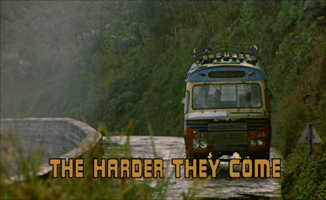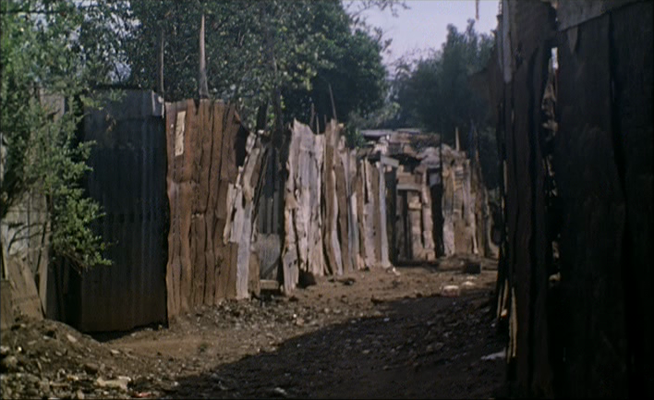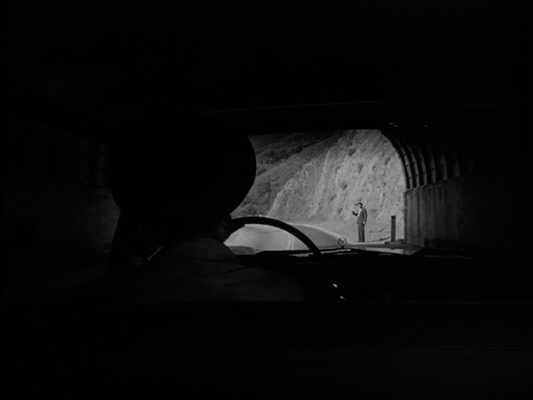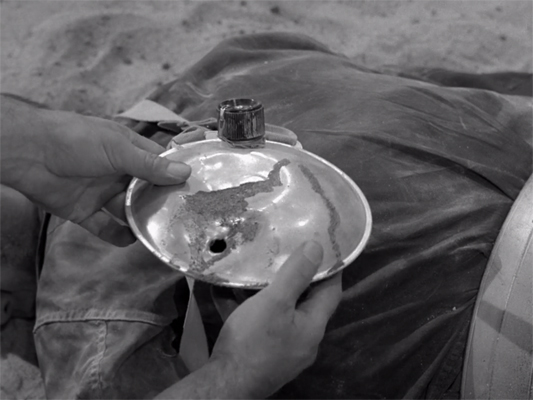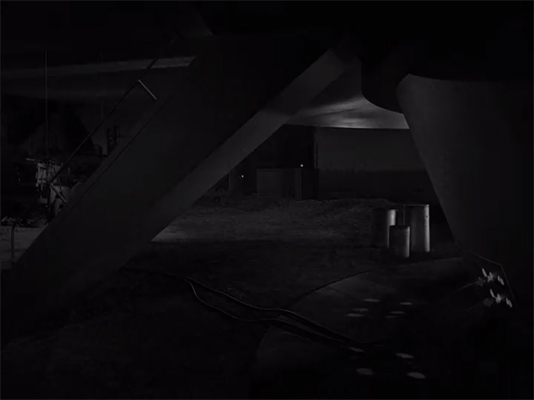Okay, I started to feel bad about neglecting the queue so here I am pushing onward.
It’s been a while so a quick refresher. Previously on Game Log:
When last we saw our spreadsheet, I was making my way through the 10 games purchased as the “Humble Origin Bundle” on August 27, 2013, an assortment of “triple-A” games from Electronic Arts that aren’t quite my usual fare. So far I’ve given at least an hour each to Dead Space (dismember horrors), Burnout Paradise (crash cars), Crysis 2 (DOMINATE WITH YOUR POWER), and Mirror’s Edge (be so so fierce).
Next up is Dead Space 3 … but I’m just declaring this one a no-go without even starting it. Having almost immediately found the original Dead Space too unrewardingly yucky to continue, I think it’s safe to say that this entire series isn’t for me. I don’t need to subject myself to any more of it just to prove that. (Yeah, even though they say Dead Space 3 is significantly less scary than its predecessors. I don’t care.) I’m comfortable resigning myself to getting my $4.95 worth out of the other 9 games.
(In related news: email me if you want a code for redeeming a copy of Dead Space 3! Still good! Never used!)
Five to go.
• Medal of Honor (2010): Danger Close Games (Los Angeles, CA) / EA DICE (Stockholm, Sweden) [played for 1 hr]
I had to stop after an hour because I think this game may be evil. Evil in the sense of being by and for a mindset that is responsible for some of the real troubles of the real world. I was worried this might be hard to explain but conveniently it’s all on show in the trailer above.
Is “macho” really evil? I don’t know; maybe that’s too strong a claim. I can hear how extreme it sounds to say that.
But if “evil” is going to refer to anything, shouldn’t it be this? Flipping the switch. The wolf pack. The unknown elite.
It was after this cut scene that I quit. I couldn’t stomach the game’s unbelievable self-satisfaction about having recognized that an Afghan would have feelings. Writer: “Hey, an Afghan saying some emotional stuff, about how he’s, like, a human being or whatever, would be a really awesome opportunity to contrast the kickass hotheaded take-no-shit side of American masculinity with the mature, compassionate, also-take-no-shit side of American masculinity. I’ll have him babbling, and a wise American will cut him off in an awesomely manly fatherly voice and say ‘I understand. Where are the enemy?'”
The idea that an Afghan might resent being cut off, might feel outraged at being threatened and then patronized by heavily-armed self-satisfied foreigners, is beyond the game’s ability to imagine. It’s too busy looking in the mirror and flexing, and being proud of its refusal to take shit. No more shit. Take no shit. We don’t take shit. One thing you can say for sure about the most elite operators in the world: they don’t take shit.
“We’re gonna need a bigger boat.”
This is a real psychology and, yes, I think it is out there doing evil on this earth. It arises from the taking of shit, and it results in the dishing out of shit.
(The use of echoey middle eastern drones to signify “sober worldliness,” the suppressed and muffled fear and sadness of the proudly battle-hardened, is starting to be a red flag for me. When you hear that keening in a movie these days it’s almost always a sign that some emotional poison has gotten into the water.)
• Battlefield 3 (2011): EA DICE (Stockholm, Sweden) [9 hrs]
Yes, I know, this would seem to be exactly the same game. Yet this one I played to the end. Its attitude was markedly less toxic. Naturally, it too dabbles in absurd and unhealthy ideas of masculinity — that goes with the territory — but this time those absurdities felt less directly related to moral rot in the real world. Battlefield 3 certainly glorifies the sights and sounds of war and the act of killing, but it doesn’t dwell on how powerful and manly it all makes you. It offers you a fantasy military-fetish experience that, in good faith, it simply assumes you will enjoy. There’s none of that air of narcissistic bullying about it.
It certainly has some tasteless elements stuck in there, but to me they felt naive rather than calculating. It’s the difference between a teenager who says offensive stuff because he’s enthusiastic and oblivious, and a teenager who knowingly says offensive stuff because he wants to prove that he’s too hot for you to handle.
Battlefield 3 is fundamentally an online multiplayer game, with a single-player story game tacked on. Reviewers generally loved the former and dismissed the latter as a sloppy mess, best ignored. But I of course only played the latter. The graphics and overall sense of environmental immersion were terrific, among the very best I’ve ever seen. The rest was indeed sort of a sloppy mess. But I was too entranced by the production values to stop before it was over.
Fun fact: while I was in the middle of playing this game, C-list tabloid mainstay and DSM-5 spokesmodel Donald Trump was elected President of the United States and Commander-in-Chief of the Armed Forces, in what has been described as an “actual event.” On the first day afterward I thought I might not be able to continue with this game because its combination of blinkered idiocy and indiscriminate American military force would ring too relevant for comfort.
But on the second day after I realized, “if I stop shooting at CGI terrorists, the Trumps win,” so I played the rest in one go. It was exactly as fun as the pre-election portion of the game. Let that be a lesson to us all.
• The Sims 3 (2009): The Sims Studio [= Electronic Arts] (Redwood City, CA) [played for 2 hrs]
+ “Late Night” expansion (2010) + “High End Loft Stuff” pack (2010) + “Date Night” clothing set (2012)
This is an enormously popular game into which many people pour hundreds of hours. I did two hours and I’ve decided to move on.
I built a guy. I tried to make him be me, but after many minutes of carefully tilting his nostrils and rotating his chin and scaling his eye socket depth etc. etc. etc. I had only managed to build something vaguely like a waxwork Jake Gyllenhaal. The game then suggested to me that he was a “loner” and “artistic” and that his life goal was to be a film composer. (Believe it or not, those were randomly generated, but of course I accepted them, on the fortune cookie principle.) I called him “Fred Zank” and moved him into a house. After a tutorial showed me how to control the camera — extremely awkward! — and order Fred around, I was encouraged to tend to his needs, get him a job, and generally guide him toward a life well lived.
Left to his own devices, Fred just wanted to sit in his house and read a fantasy novel. A newspaper was delivered, and I had Fred read it. It informed us about some kind of sporting event going on, so I sent Fred into the city to try to attend. I guess technically he did, but I was disappointed to find that the interior of the stadium wasn’t actually depicted on screen so it didn’t feel like a rewarding outing. Upon exiting the stadium, Fred indicated that he was thirsty and hungry, so I directed him to a nearby establishment with a martini icon, but the bouncer repeatedly refused to let him in, so I sent him to another one. That bouncer refused to let him in too. These humiliating experiences seemed to agitate Fred somewhat, and by this point it was getting quite late and Fred was apparently weary from lack of sustenance.
In desperation, I found a dive bar on the map and sent Fred there. When he arrived I had him order food and drink from the bartender. Perhaps he would have done it on his own, and my order somehow doubled up the amount of food and drink; in any case, he seemed to go on eating and drinking for a long time. A woman sat down at the bar next to Fred and I was going to have him try chatting her up when he suddenly indicated that he had urgent need for a toilet. I trundled the camera around looking for the bar restroom, and, finding it, directed Fred to use the toilet there, but unfortunately at that moment I saw that Fred had spontaneously added a new task to his queue, called “pee self.” He then stood up rather confusedly from the barstool and peed on the floor, obviously disgusting the 7 or 8 people who stood nearby, whose thought bubbles all filled up with pictures of Fred.
This incident made him fairly unhappy, and he began to emanate a cloud of stink. Furthermore it was now the wee hours of the morning. I sent Fred home to sleep it off in his bed, which he did, not waking until mid-afternoon. I had him take a shower, and then look for a job in the paper, which he immediately found: he could apparently enter the music industry as a professional “fan.” Having accepted the job, the next morning I had him make himself breakfast to prepare for his first day at work. The only thing he knew how to make was “waffles.” I watched him combine ingredients into a bowl, stir the batter, and then pour it into some kind of pan — I guess a waffle mold? — that he put in the oven. After a few minutes of baking, the oven burst into flame. Fred, standing nearby, began to panic, uselessly. The fire spread to the wall and the floor. The fire alarm went off and soon a fireman had arrived to spray the oven — and Fred — with foam.
Soon a mysterious car arrived outside to drive Fred to work. It drove Fred to a high-rise office building. Again, the interior wasn’t shown, so I don’t know exactly what Fred was doing as a professional music fan, but he was there at work for several hours, and left with about $125 of pay.
At this point I stopped.
I found all of this amusing, sure, but also sad. There was something disheartening about the loneliness and futility of this sprawling world-system, full of catalogues upon catalogues of options, and something oppressive about Fred’s overwhelming vacuity. Even his most outrageous humiliations were weightless, arbitrary, inconsequential.
It was like the opposite of storytelling: the game offers events that would seem to have obvious dramatic meaning, and then drains them of that meaning. In this game people ostensibly die, are born, fall in love, betray one another, achieve their dreams, lose it all, blah blah blah, but it all has exactly the same texture of utter emptiness. That’s supposed to be the fun of it, I suppose, but to me it means there’s nothing worth staying for.
The Sims 3 might purport to be like playing with dolls, but when kids play with dolls, their emotions are the life of the dolls and the life of the dolls is all emotion. There are no rules other than self-expression. Whereas these computer dolls are all rules, only rules, and they do their feeling by themselves. They have animations for acting sad and happy and scared and eager so that you don’t have need or occasion to imbue them with anything of your own. A doll is a totem; The Sims are just sea monkeys. And if I’m going to raise sea monkeys I want them simple. I don’t want “infinite possibilities.”
Just last month, Stardew Valley managed to draw me into playing a “life simulator” because, unlike the usual fare, it was fundamentally sentimental about everything. The changing of the seasons; the sprouting of a new radish; showing daily affection for your cows: the game’s aesthetics are very specifically selling the idea that any of these things might wet your eyes a bit with existential poignancy. And I’ll buy that; I have use for it. (Yes, sometimes I criticize attempts at that sort of thing as kitsch, or insincere, but I criticize because it’s something I care about, something I need.) The Sims 3 is the opposite: a mechanized simulacrum of life deliberately emancipated from all sentimentality. It invites us to enjoy the forms of shopping and coupling and advancing and earning without the burden of those things having any substance. It is the names and shapes of things without their pesky meanings. That attitude in itself has a meaning, for me, in relation to life, and it means depression. This is what life looks like when you are looking through the wrong eyes.
So that’s enough of that.
• Command & Conquer: Red Alert 3 — Uprising (2009): EA Los Angeles (Los Angeles, CA) [played for .5 hrs]
How to parse the title: first you’ve got Command & Conquer (1995), and then you’ve got a prequel, Command & Conquer: Red Alert (1996), which begins its own line of descent, its grandchild being Command & Conquer: Red Alert 3 (2008). And then a few months later, the present game, Command & Conquer: Red Alert 3 — Uprising, which is a “stand-alone expansion” to Red Alert 3. This all means that my sense of being late to the party is four layers deep. Plus if you watch the trailer you’ll probably understand why I’m not sure whether I was invited to this party at all. Kinda seems like a party for a different crowd.
I like the concept of Real-Time Strategy but my brain doesn’t naturally take to it. I started the tutorial, but trying to get in the headspace gave me such a strong sense of swimming upstream against my own desires that after half an hour I decided it needed to be heeded, so I’m going to skip this game. My superficial impression is that if I were even remotely inclined to play an RTS right now, this would be a pretty good one. But I’m just not.
Thought: I am far more willing to push through tedious rulesets when learning board games because a) the entire responsibility for enacting the game is on the player so it feels natural that I should have to shoulder more information than when a computer is running the show, and b) the point of a multiplayer game is not so much to contend with the rules as it is to contend with other people through the medium of the rules, which holds greater emotional promise and so is worth a greater investment. It’s true that I am a lifelong lover of puzzles and single-player games, but the ones I like generally have fairly simple and immediately intuitive rules. To me, essential to the pleasure of experiencing a thing alone is that you encounter it as it appears, rather than as it explains itself. The appearance is the explanation.
Sidebar:
I love the ideal represented by the modern practice of incorporating the tutorial right into the game proper: namely that learning is entirely the teacher’s project, not the student’s, and so at its best it will be indistinguishable from ordinary doing. The only necessity is that the on-ramp begin all the way on the ground — after that, as long as the road is well-constructed, from the traveler’s perspective it’s all just road. Ramps are not “prerequisites” to level ground; all travel is continuously contoured.
For puzzle games this ideal is absolutely achievable; this year The Witness and Stephen’s Sausage Roll were both built entirely around the principle of learning. But with intricate game-systems like RTSes and board games, it’s much more difficult to create a tutorial that resembles play, because the rules are not inherently cumulative. The intricacies usually exist because they’re necessary for structural balance. Starting out with only one or two rules in place is like playing a completely different game, one that the designers rarely want to spend time exploring and making worthwhile in its own right. Nonetheless I continue to fantasize about such things.
I would love board games to come with an interactive learning ritual, something like a Seder.
• Populous (1989): Bullfrog (Guildford, UK) [played for a few minutes]
This last game in the “Humble Origin Bundle” seems to have been tossed in as a kind of historical bonus item. Populous is a tremendously influential classic from nearly 30 years ago. It’s probably not my cup of tea, but I was still looking forward to giving it a shot, after all these years of hearing about it. Unfortunately, the version in this bundle displays with the wrong colors and the wrong proportions. More importantly, it does not come with the manual. If any game has ever needed a manual, it’s this one — the gameplay is highly idiosyncratic and the controls are a set of buttons marked only with obscure glyphs. Could I find the manual online somehow, and also try to figure out how to improve the emulation? Yes. But I could very easily have found a pirated copy of this game somewhere, too. This trek through my backlog is about giving a chance to all the games I’ve already acquired. This acquisition turns out to be missing some parts. Moving on.
Here ends the “Humble Origin Bundle,” which in retrospect was kind of a bust. I bought it for Mirror’s Edge and out of curiosity about Dead Space and The Sims 3, but none of those really panned out the way I hoped. 25 hours of “meh” for $4.95 I rate as not great. It’s cheap enough per hour, but there are, after all, infinite hours of “meh” to be had for free in the real world.
September 20, 2013: GOG adds two new free games to their roster and I reflexively add them to my library. As with prior free games on GOG, these are both games that had already been declared “freeware” by their copyright owners and can be downloaded elsewhere, but I’m still counting them here because they were, on that day, the objects of my acquisitive compulsion. About which I feel slightly ashamed. All this blogging is, I guess, my way of proving to myself that this compulsion isn’t completely empty and neurotic after all; I eventually do get something real out of these things I acquire. (Some of them, anyway.)
Better, I know, would be to accept and embrace any past compulsion, rather than try to vindicate it with a new present compulsion. Yes. But there’s a second aspect to all this game playing, which is that I like games, am comforted by them, and happen to have this bottomless bag of gifts for myself, just standing by. It seems like a genuinely worthwhile thing to be doing at a time when I am seeking peace of mind, to be pulling stuff from that bag.
• Flight of the Amazon Queen (1995): Interactive Binary Illusions [= John Passfield, Steve Stamatiadis, & Tony Ball] (Brisbane, Australia) [5.5 hrs]
(No trailer available, so this is the whole game. Skip around; you’ll get the gist pretty quickly.)
This of course I can handle. One of the most competent and committed of the fan-made LucasArts imitations, at least from the era before “Adventure Game Studio” came out and every geek in Europe could make his own Monkey Island knockoff. These Australian guys completely built their own wannabe LucasArts game from the ground up, and then managed to sell it commercially. Albeit not in very large numbers.
The game is in every possible way an imitation of Indiana Jones and the Fate of Atlantis (1992) — plus a couple of elements from The Secret of Monkey Island (1990) — but the designers deserve credit for making their imitation non-slavish. It is entirely derivative but it’s not autistic mimicry, as so many fan games tend to be. It’s a real, original game that just happens to get all its ideas from other, more famous games.
Flight of the Amazon Queen is clearly a passion project, very ambitious for the people making it, and that means its has that special energy that amateurs bring. Like those kids who remade Raiders of the Lost Ark. These guys have done something similar and it’s compelling in a similar spirit.
On the merits, the actual story and puzzles aren’t really interesting or that much fun. There’s an unconscionable amount of slow, slow backtracking, always unskippable. But the graphics are mostly quite good, and I can coast a long way on just the implications of those pixelated DeluxePaint shadows.
• Stargunner (1996): David Pevreal, Craig Allsop, James Podesta, & Leo Plaw (Brisbane, Australia) / Apogee Software (Garland, TX) [played 2 hrs]
The other freeware game added to GOG on the same day happens by complete coincidence also to have come from Brisbane, Australia. (I just searched to see what’s the most famous game ever to have come out of Brisbane. The answer is: Fruit Ninja. Who knew? Or cared? Video games are a truly international culture, far moreso than movies or music.)
This is a distinctly ugly horizontal shoot-em-up from toward the end of the “shareware” era of scrappy half-independent games. It plays fair and has generally a good feel to it, but there’s not enough personality here to entice me to put in the time. If this were the only game I owned, I’d probably grow to love it. But I own many, many games.
It’s also very hard and it doesn’t try to ease you in. Right from the beginning of level 1, even set to “easy” difficulty, it’s hard. I’d be more interested in learning how to meet that challenge if only the aesthetics were motivating me to care. As it is, I felt a little like it was someone slamming the door on me every time I knocked. Hey, man, I’m just here as a courtesy, trying to be polite! I’m not, like, obsessed with you. If you’re not going to talk to me, I’m just going to go to the next house. It’s no skin off my back.
Especially since it was free.
September 23, 2013: After twelve days of considering whether buying “Humble Indie Bundle 9” for $5 is really a good idea, I finally take the plunge. This officially nets me ten games, but three of them (Bastion, LIMBO, and Brütal Legend) are already in my collection from prior bundles, so really I get seven games out of it. Of these, I have until now played only one (and not for very long, so I’ll be returning to it here).
• Trine 2: Complete Story (2011–13): Frozenbyte (Helsinki, Finland) [17 hrs]
Remember Trine? (It’s okay. I know you don’t. This is just for me.) Well, here it is again, with “2” mostly referring to the production values. Lavish to look at and bask in, in a tasteless, immoderate, Thomas Kinkade kind of way. Also bland and uninvolving in a Thomas Kinkade kind of way. It’s a tad more satisfying than the original — at least as far as I can remember it — but ultimately it’s just more of the same game. I didn’t mind being transported to lush Fantasy Nowheresville for a while; I got something out of it. But that’s hardly a recommendation. I’ve been to plenty of Fantasy Nowheresvilles with much more to offer. We all have.
This release is called “Complete Story” because it also contains a substantial new set of levels that were released a year after the main game. The extra material is markedly better than the rest: less padded, more varied in play and in visuals — which are, to my eye, much more attractive than in the core game. This is the way it often goes: the extra bits of DLC are developed after the pressure of getting the game finished has been lifted, and after the team has developed a comfort with their materials, and so they end up being more confident and compelling precisely because they’re inessential. Then again, sometimes it goes the other way: the extra bits are nobody’s top priority and nobody wants to waste good ideas on them, so they come out timid and shoddy. It kind of depends on the prevailing spirit of the studio. I feel like the superiority of the DLC over the main game actually reflects well on the company culture at Frozenbyte.
There’s a Trine 3 out there but I don’t own it and hopefully I’ll be able to keep it that way.
More from this bundle next month. You can’t wait.
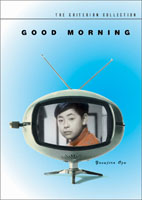



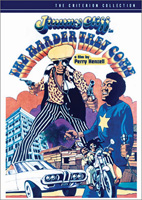 (OOP 9/2005)
(OOP 9/2005)